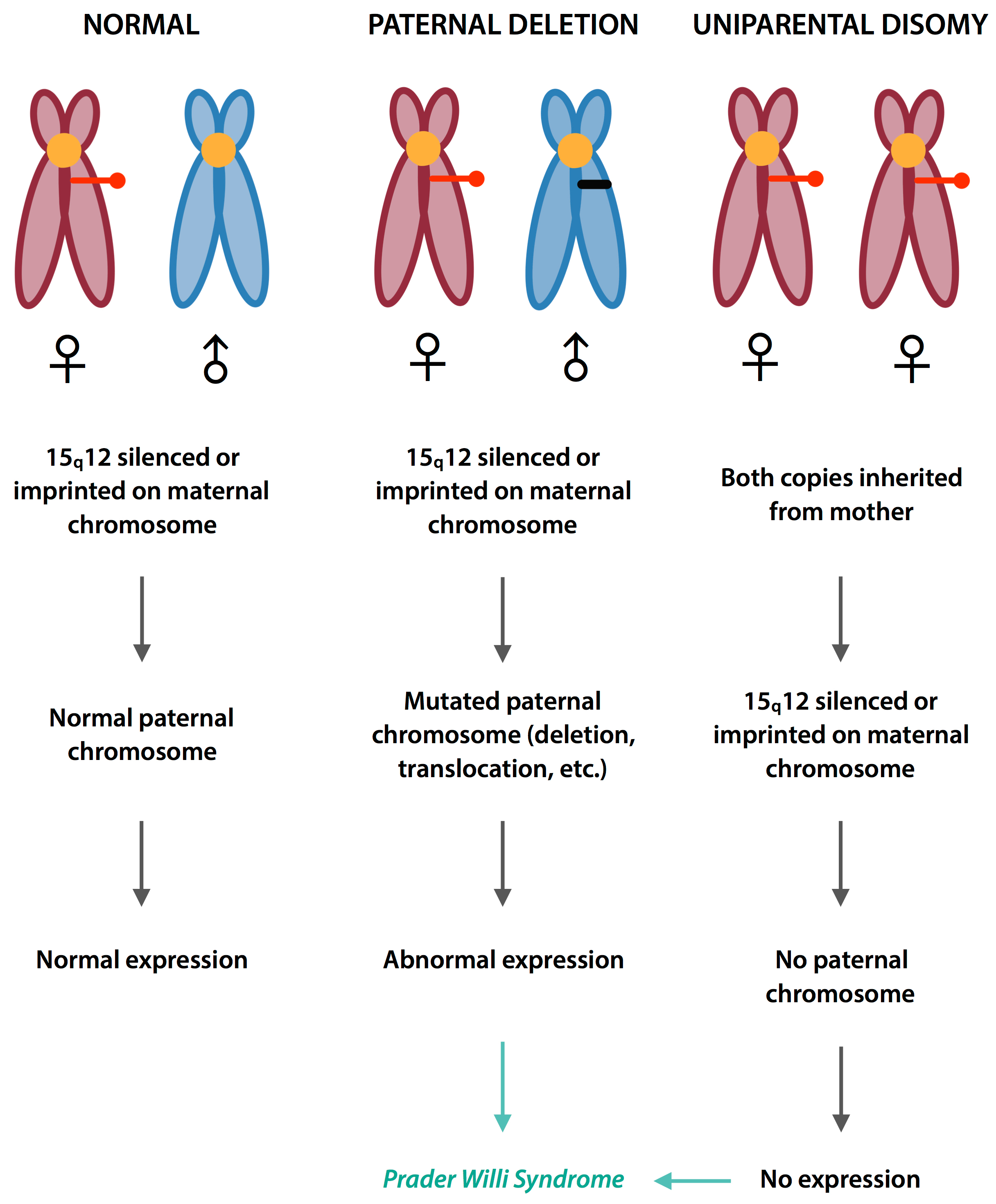Genomic Imprinting - A whole new pattern of inheritance
Remember that time when you were fervently working on a project and you skipped a meal? Or that time when you were late to work and forgot to grab breakfast? Or when you were stuck in surgery and your senior wouldn't let you take a break for a snack? We've all been there. We’ve all felt that pang of hunger that gnaws at our stomach. We've all experienced that dull nibbling that slowly grows into a painful persistent ache that didn't stop until we ate.
But what if it didn't.
What if you were constantly hungry and couldn't stop because you never felt full or satisfied?
What if that pain never stopped? This is what patients suffering from Prader Willi Syndrome go through.
Prader Willi Syndrome is a rare genetic disorder that results in the patient being constantly hungry. To curb their hunger, they eat incessantly and suffer from the side effects of over eating like obesity, hypercholesterolemia, atherosclerosis, young stroke and many others. Psychological afflictions like depression, low self esteem and high suicide rates are also associated with this condition.
As terrible as this illness is, it's discovery has led scientists to understand a whole new pattern of inheritance known as genomic imprinting.
The first thing you need to understand is that genomic imprinting is not actually a method of inheritance of disease. It is a normal process that takes place in all living things that have genetic material.
To understand genomic imprinting let's review the basics of genetics:
Every human being has 46 chromosomes. 23 of them come from the mother and 23 of them come from the father. Pretty straight forward right?
Now, in general, the genes expressed on these chromosomes are expressed together. For example, if the mother is short and the father is tall, the offspring is usually somewhere in the middle. This is known as midparental height. Color of the skin, shape of the eyes and many other features exhibit this pattern: the children show a mix of the characteristics of their parents. Additionally, inheriting two copies of a gene also means that if there is an issue with one copy of the gene, the other copy will take over. Think of it as a fail safe. In some cases, however, only traits from one parent get expressed. The traits of the other parent get silenced. This process is also known as imprinting.
So how does this silencing or imprinting happen?
All of the DNA in our body is subject to a process known as epigenetic modification. During this process methyl groups are added to the DNA and the structure of the DNA is changed by making changes to the Histone proteins. These changes prevent the DNA from being read and being transcribed into RNA or translated into proteins.
So how is this different from normal mutations like point mutations or insertions or deletions? Well, you see, in epigenetic mutations the actual sequence of DNA is not affected at all.
The problem is that, the whole intact code itself becomes silent or imprinted.
In fact, the prefix epi- means “above or outside”, so epi-genetic literally means “above or outside the genes.”
So, what is genomic imprinting? It is a process whereby one of the two copies of the genes is silenced. And how does it happen? It happens by a process known as epigenetic modification. But how does this relate to Prader Willi Syndrome?
The area of interest for Prader Willi Syndrome is a gene called SNPRN gene on chromosome 15. Now, as always two copies are inherited: one from the mother and one from the father. It so happens that the copy from the mother is always silenced or imprinted. This means that the only functional copy is the copy from the father. So when there is a problem with the single functional paternal copy, it results in Prader Willi Syndrome. This is because the maternal copy is imprinted and so cannot compensate for the mutated genetic material.
In some cases two copies of the mothers imprinted or silenced gene are inherited and since there is no functional gene from the father the child presents with Prader Willi Syndrome. This type of inheritance is called uniparental disomy.
The result of this mutation is a loss of function of the SNPRN gene which leads to manifestations in multiple systems.
Genomic imprinting is a normal process and over 150 genes have been identified that undergo genomic imprinting.
- Angelman syndrome is another disease caused by genomic imprinting which involves a different area of chromosome 15.
- Beckwith Weidman syndrome also is caused by genomic imprinting but involves chromosome 11.
The knowledge of the phenomenon allows us to, not only understand the pattern of inheritance of many diseases but also gives us the the tools to engineer targeted genetic treatments and also prevent further propagation. Numerous new technologies are being discovered which may allow us to one day reverse genomic imprinting or maybe even use it to silence harmful genes. The field of epi-genetic modifications is rampantly growing today, and I hope this article has given you a simple overview of what lies beyond!
Author: Narendran Sairam (Facebook)
Sources and citations
“Genomic Imprinting.” Learn.Genetics, Genetic Science Learning Center, learn.genetics.utah.edu/content/epigenetics/imprinting/.
“What Are Genomic Imprinting and Uniparental Disomy?” U.S. National Library of Medicine, National Institutes of Health, ghr.nlm.nih.gov/primer/inheritance/updimprinting.


